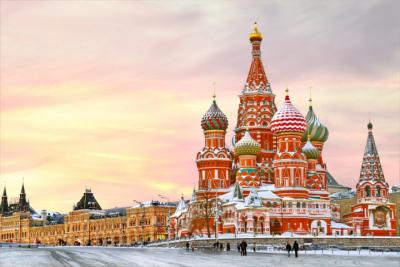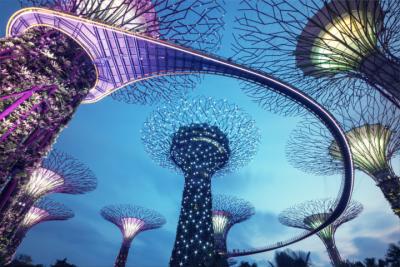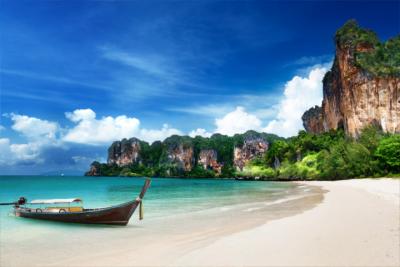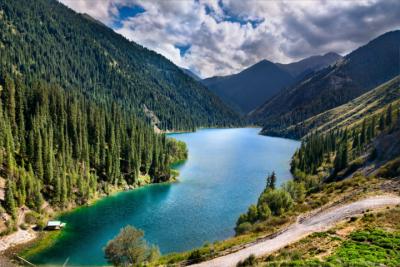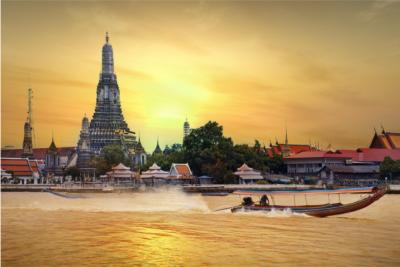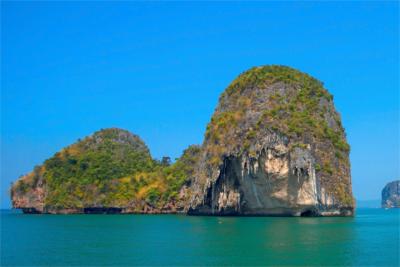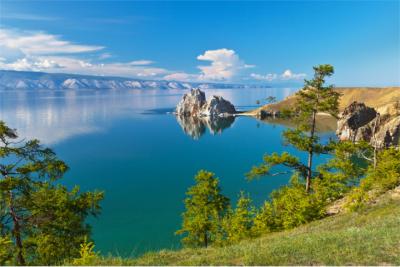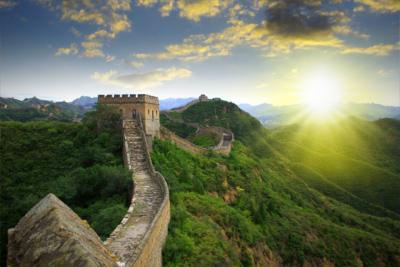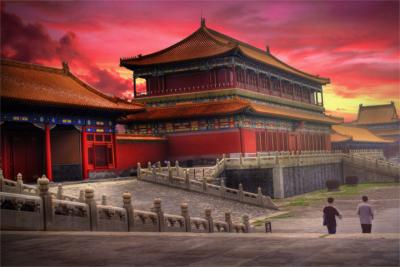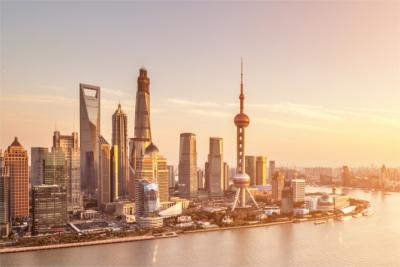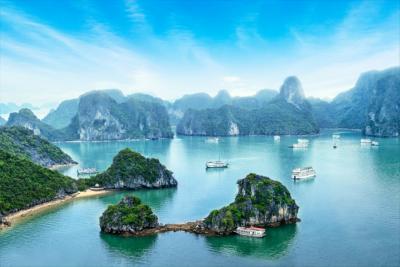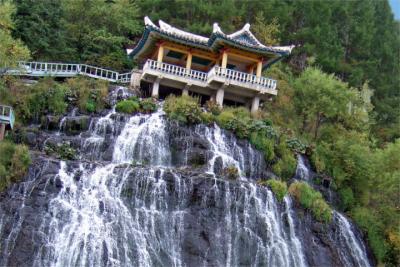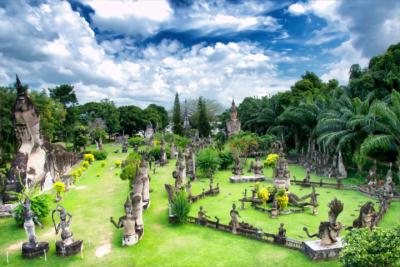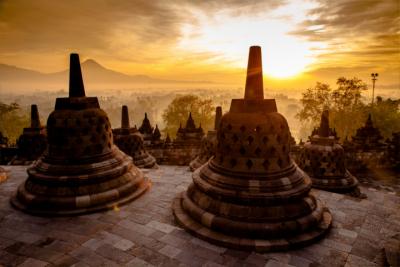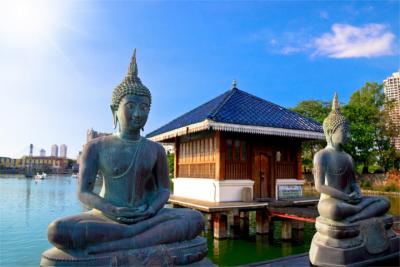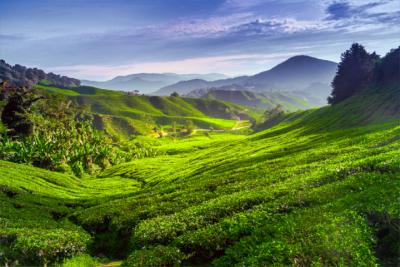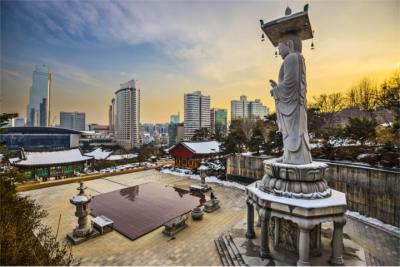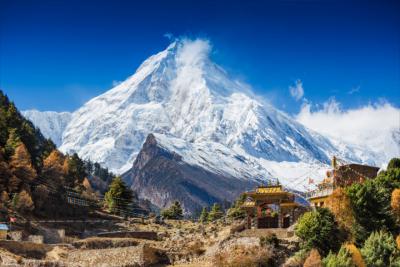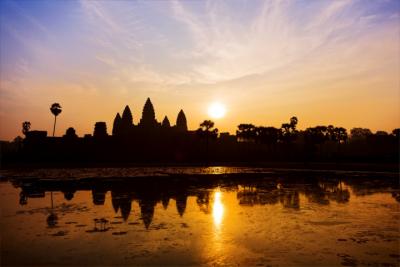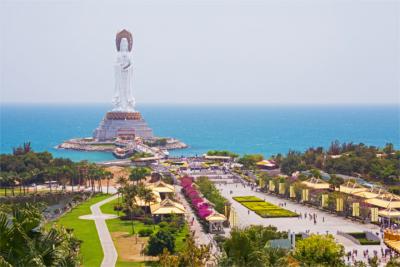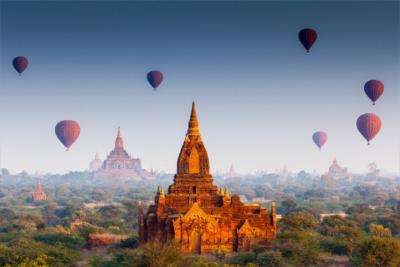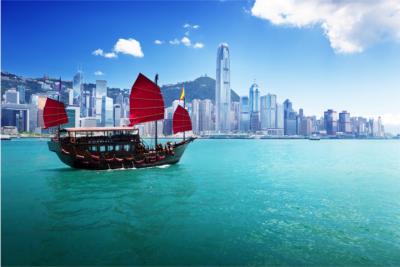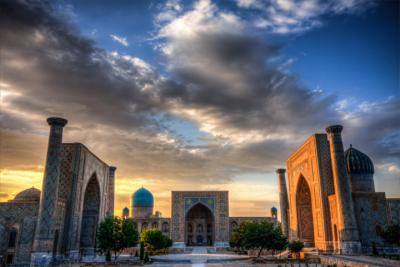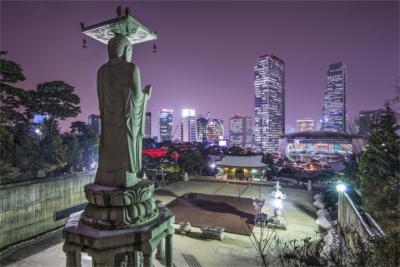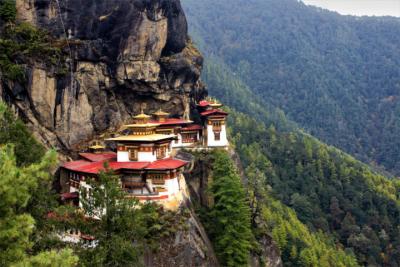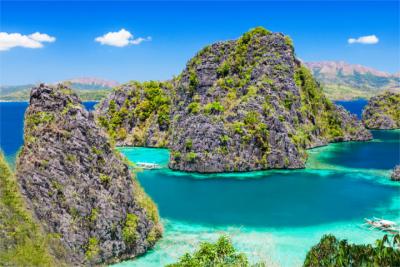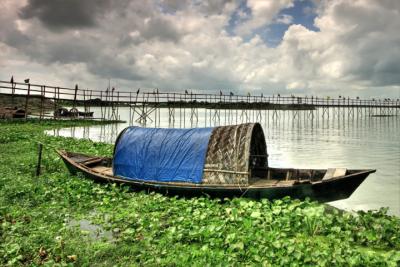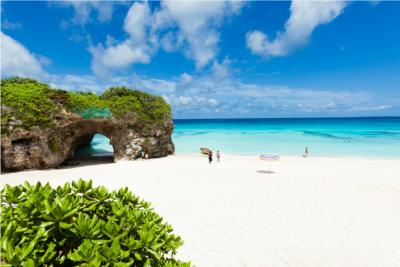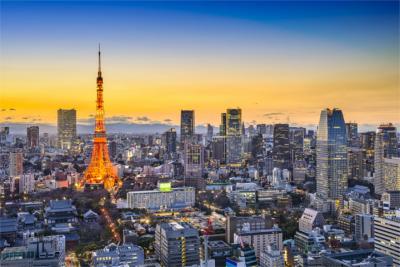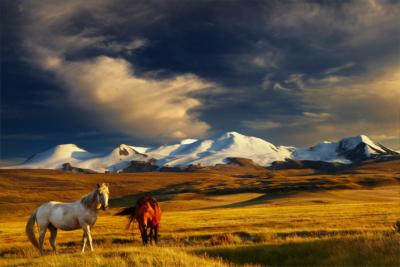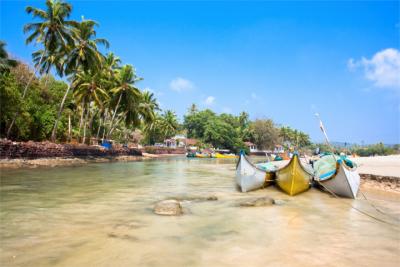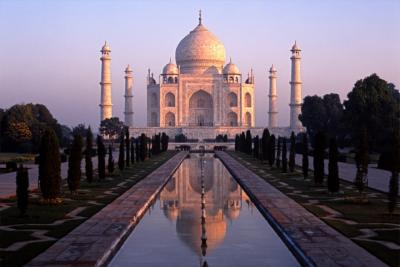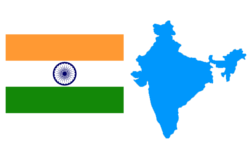Travel Offers
Travelmyne Featureprint
Distance
India - The Exotic Subcontinent
The stories of Mowgli and his friends have shaped the picture of the Indian jungle, Shah Jahan's love monument Taj Mahal made the country Internationally known and the teachings of Buddha constitute a world religion which is known far beyond the country's borders.

Geography - Between the Himalayas and the Indian Ocean
Regarding area, India takes up the greatest part of the Indian subcontinent and is one of the ten biggest countries on earth. It is divided into 29 states and seven union territories. While the Himalayas constitute the natural border in the north, the region borders on the Indian Ocean in the south. Travellers can reach the surrounding countries Pakistan, Nepal and Tibet as well as Bhutan, Myanmar and Bangladesh from India. Its climate is mostly subtropical to continental. The south is dominated by tropical and maritime climate. Maximum temperatures of up to 50 °C are not uncommon in the summer months from April to June. A typically Indian phenomenon is also the monsoon and rainy season from June to September.
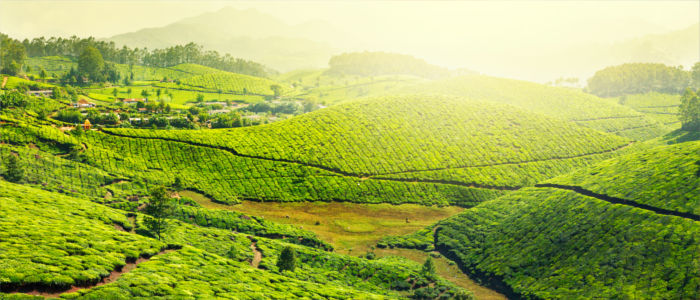
Nature - Royal tigers and shimmering peacocks
Almost all bigger Indian rivers have their source in the Himalayas. The most important one is the Ganges. The country's vegetation areas range from the high mountain zones of the Himalayas to the tropical rainforests in the south to the vast mangrove forests at the east coast. Rhododendrons and bamboo are very common in India. Besides the fertile areas along the Ganges and the Brahmaputra, most of India is covered in deserts. The Great Indian Desert Thar in Rajasthan, the exciting shifting dunes of the sandy desert and the dry salt pans characterise this unique and bizarre landscape. Despite the inhospitable conditions, lizards, snakes, the Great Indian Bustard and the Indian gazelle feel very comfortable in this environment and there are also people which settled in these barren regions. The most famous desert cities are Jodhpur, Jaisalmer and Bahawalpur. The country's extraordinarily diverse fauna includes the Indian elephant, the great Bengal tiger, rhinoceroses and snow leopards. With over 1,200 different species of birds India surpasses the biodiversity in the whole of Europe. Especially known are the ibises, the cranes and the orioles. The colourful peacock was chosen as the national bird.

Natural sights - Lunar landscapes, canal labyrinths and Darjeeling
You can visit over 100 national parks in India. Especially worth seeing are the Gir Forest National Park and the Great Himalayan National Park, but India also offers an abundance of natural beauty outside these parks. The lunar landscape of Ladakh in Leh, Jammu and Kashmir looks strange and exotic to the typical tourist. The bizarre plateau is often simply called "Moon Land". Significantly more lushly vegetated areas are the Kerala backwaters in Cochin. You can best explore the many labyrinthine canals and lagoons on a boat trip. The vast hills of the tea plantations of Darjeeling constitute an oasis of piece and quiet. Their smooth hills stretch for miles and the smell of fresh tea leaves fills the whole region. Especially animal lovers get their money's worth in India. Depending on which region you want to visit, you can marvel at the country's species. The Bengal tiger is home in the Kanha National Park. The population of the endangered national animal slowly recovers from the poaching and the restriction of its natural habitat. Lions are also not uncommon in India, at least not in the Gir Forest National Park. Visitors can watch the great Indian rhinoceros in the Kaziranga National Park. The magnificent Himalayas are also populated by extraordinary species of animals and plants. With a bit of luck you can spot the rare snow leopards on a climbing or hiking tour. Those who want to explore the country on the water may discover the Ganges river dolphin, which lives in India's great rivers.
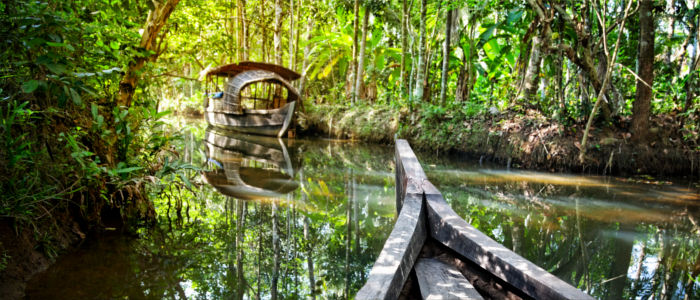
Culture - Impressive sacred buildings and Bollywood's influence
India is the most populous country on earth after China and several of the most significant religions originated here such as the Buddhism and the Hinduism. The Islam only spread during the Middle Ages and Christianity was taken to India by the Europeans in colonial times. The Indian population is sociologically structured by the caste system, which is a major feature of Indian culture and deeply ingrained in the people's mentality. The hierarchy of the caste system isolates certain social groups from others and has a great influence on the inhabitant's lives from their choice of career to the marriage partner. A marriage between two people which belong to different castes is not forbidden but it is rather uncommon. However, especially the young Indians tend to choose a love marriage now and ignore the division into castes. The country's biggest city Mumbai, formerly called Bombay, is also its economic centre. India's capital New Delhi is only the second biggest city but it is the cultural centre of the Hindus. An important high-tech location is Bangalore, which is also called the "Silicon Valley of India". The image the world has of India was strongly shaped by the musical Indian films. You do, however, not feel much of the colourful and noisy Bollywood atmosphere in the cultural cities such as Kolkata (also Calcutta). Instead, Indian traditions and the teachings of Buddha are on the agenda here. India is called the country of contrasts. On the one hand, it presents itself in the form of emergent metropolises. On the other, the country keeps its rural charm and natural idyll. These contrasts are also reflected in the people's mentality. The Indians wrote the world-famous Kama Sutra but most marriages are still determined by the parents and hardly leave any room for love or romance. Those moving around India should bring two things: a lot of time and some humour. Everything takes a little longer here. The inhabitants do not care much for appointments and take things calmly. The situation is completely different with regard to traffic. Rush, a continuing chorus of horns and high speeds can have a thrilling effect. It is not the survival of the fittest but the survival of the loudest. The Indians already sound their horn from a distance to make themselves felt. Especially in the dense city life this can weaken the nerves of travellers who are not used to it. The picture of the holy cow which lies in the middle of an Indian street has become a cliché. No cow can feel safe any more in this hectic city life.

Cultural sights - Taj Mahal, Golden Temple and the Palace of the Winds
The Indian culture is mainly expressed in the unique sacred buildings and temples. The Golden Temple Harmandir Sahib in the region Punjab is the most significant sanctuary of the Sikh and was already built in the 16th century. India's most beautiful and famous landmark is the legendary Taj Mahal in Uttar Pradesh. The Mughal Emperor Schah Jahan built it out of love for his wife Mumtaz Mahal. Travellers who want to explore this love monument on their own should visit it in the early morning hours before most of the tour coaches arrive. Another architectural masterpiece are the Ajanta Caves in Maharashtra. The numerous erotic drawings in and around the Khajuraho temples are also highly recommended. Altogether India is a nation of colours, which is reflected in its architecture among other things. The Jaisalmer Fort lies in the middle of the desert and is often called the "Golden city". The "Pink City" Jaipur, on the other hand, is known for its hospitality and owes its name to the salmon-pink, five-storey "Palace of the Winds".
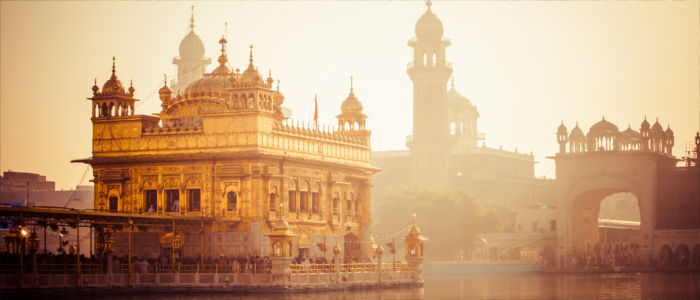
Experience - Tandoori dishes and camel fairs
The Indian cuisine is one of the most popular ones worldwide. The top restaurants in New Delhi are fantastic destinations for connoisseurs but you can also enjoy the characteristic tandoori chicken, lamb curry, samosas and the naan bread, baked in the tandoor oven, outside of the capital. The famous chicken tikka masala is not actually an Indian invention but you find it on every menu now. Typical drinks are the lassis, which are made of yoghurt, and the dahis. The national drink is the delicious masala chai - a tea refined with milk and spices. India has developed into a popular shopping paradise. Dried fruit, fine jewellery, carpets and spices draw travellers to the oriental bazaars in Old Delhi. Jaipur, Rajasthan's capital, is regarded India's shopping centre and popular with both locals and tourists. You can get art handicraft as well as clothing and souvenirs there. Those who are interested in the characteristic Indian marble art and want a piece in the style of the Taj Mahal should try their luck in Agra. Pieces of furniture, mural paintings and even small pieces of jewellery are manufactured from the finest marble. Travellers best get to know the Indian mentality on a bazaar. You are supposed to haggle over the colourful fabrics, traditional artworks and pieces of jewellery - it is considered rude not to haggle. During this shopping trip visitors can also try on typical Indian clothes. While the men wear dhoti, lungi and kurta, the women put on saris and bindis. A truly Indian experience is the Pushkar Camel Fair, which you can reach on horseback. After these shopping adventures travellers can get spoiled in an Indian spa. After all, India is the home of Ayurveda. When you set out to get to know the Indian nightlife, you will quickly notice that it is completely different from the European standard. Only bigger cities like Mumbai and Kalkota have bars, pubs, restaurants or clubs - and even there they are only opened during peak season for the tourists. Alcohol is not an issue in India and is sold in many clubs. Travellers will, however, hardly get a drop of alcohol in the rural regions. Instead of excessive parties and nights spent dancing, the Indians go to the cinema always everywhere and all the time. Especially members of the younger generation meet in front of the screen and enjoy the newest creations from Bollywood. The most popular film was shown in the Indian cinemas for 800 weeks non-stop.

Activities - Desert safaris, cricket and Holi
The sandy beaches of Goa with their white sand and the palm groves are perfect locations for sun-worshippers. India is still an insider tip for diving but the lush coral gardens and the bewitched shipwrecks in the Arabian Sea in front of Goa make divers' hearts leap for joy. The steam-powered Darjeeling Himalayan Railway will take you high up. It has been running through the region of West Bengal since 1881. Those who think that safaris are only possible in Africa are wrong. India offers a number of exciting safari tours. You cross the desert on the ship of the desert - a camel. The Indians are passionate sportspeople. The nation is especially fond of cricket and hockey. Other popular free-time activities such as climbing, rafting, water skiing or hang gliding are also possible in many places. In addition, the Indians pride themselves on having invented chess, polo, yoga and the card game. How far this is true is debatable. A spectacular highlight is the Indian spring festival Holi, which takes place every year. This festival of colours fascinates visitors by colouring earth and sky.

Information
The Indian winter between October and March is the best time for travelling the country. In these months the temperatures are more pleasant and it does not rain as much. The most important airport is the Indira Gandhi International Airport 16 kilometres away from New Delhi. Several operators also offer the classical journey by sea. For entering the country you need a passport and a visa.
India is a destination for natural, cultural and beach holidays as well as for romantics. Even adventurers get their money's worth on trekking and rafting tours and thanks to Ayurveda, wellness and health tourism is also becoming more and more popular.

